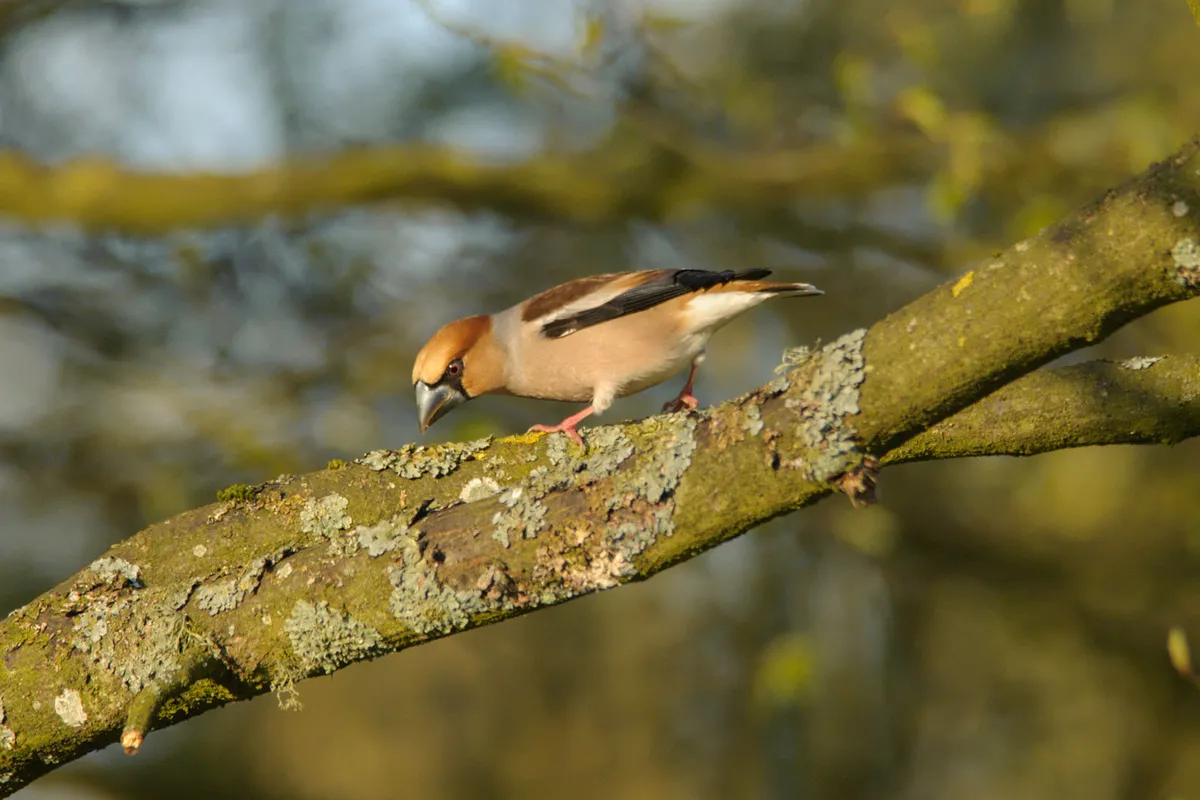It’s a species that’s normally scarcely seen in the UK – but this winter, the numbers sighted are soaring.
The bird is the hawfinch – and they have been spotted in their hundreds this autumn in southern England and Wales.
Why the spike in sightings? The RSPB explains that in autumn, the hawfinch normally migrates to the Mediterranean from its breeding grounds in central Europe. But this year, the migrating birds flew straight into Storm Ophelia – deflecting them northwards, to the UK.
Poor seed crop yields in other parts of Europe, notably in the bird’s strongholds of Germany and Romania has also been attributed for the unusual increase in the UK.
Lizzie Bruce, warden at RSPB Headquarters The Lodge nature reserve in Bedfordshire, said “In our county alone over 230 hawfinches have been counted. That’s extraordinary, as in most years we are lucky to see one or two. At The Lodge we’ve had up to four hawfinches in the tops of the birch and yew trees, with single birds flying over most days in October. This has caused great excitement for our visitors and RSPB staff, who have been dropping everything and running out the office to catch a glimpse of one perched at the top of a tree.’

The National Trust has reported there are still hawfinches at many of its places, as they make the most of the autumn fruits and the clear weather over the next few days.
Nature specialist Matthew Oates, says, “There has been an unprecedented influx of these shy and secretive birds to our shores. The keenest of birders may only spot a handful of hawfinches during years of birdwatching but right now, everyone has a chance.
“The best places to look are around hornbeam trees and yew groves that still bear their autumn fruit. If you’re at a loose end what to do this weekend, get outside to try and catch a sight of these enigmatic characters – it may be quite a while until such an opportunity comes round again.”
Trust rangers at Fyne Court, Somerset, Clumber Park, Nottinghamshire, Sizergh, in Cumbria and the Slindon Estate in West Sussex have recorded recent sightings of the birds.
Hawfinches have also been seen lately at Sissinghurst in Kent, Felbrigg in Norfolk, Hatfield Forest in Essex, Basildon Park in Berks, Steps Hill at Ashridge in Bucks and Wimpole in Cambs.
See for yourselves

If you want to spot a hawfinch, look out for a bird with a handsome chestnut head, rose-pink breast and black-and-white wing markings. They flock together at dusk to roost in trees for the night, and will also gather during the day to look for food.
It is thought there are fewer than 1000 pairs of hawfinch native to the UK after dramatic declines in recent years, though the resident population is augmented by winter migrants from the continent. Renowned for their parrot like bills, which are able to crack the hardest of shells, they are sometimes referred to as the nutcrackers of the bird world.
Read more...
...about the hawfinch at rspb.org.uk
PICTURE: Getty Images/National Trust images

